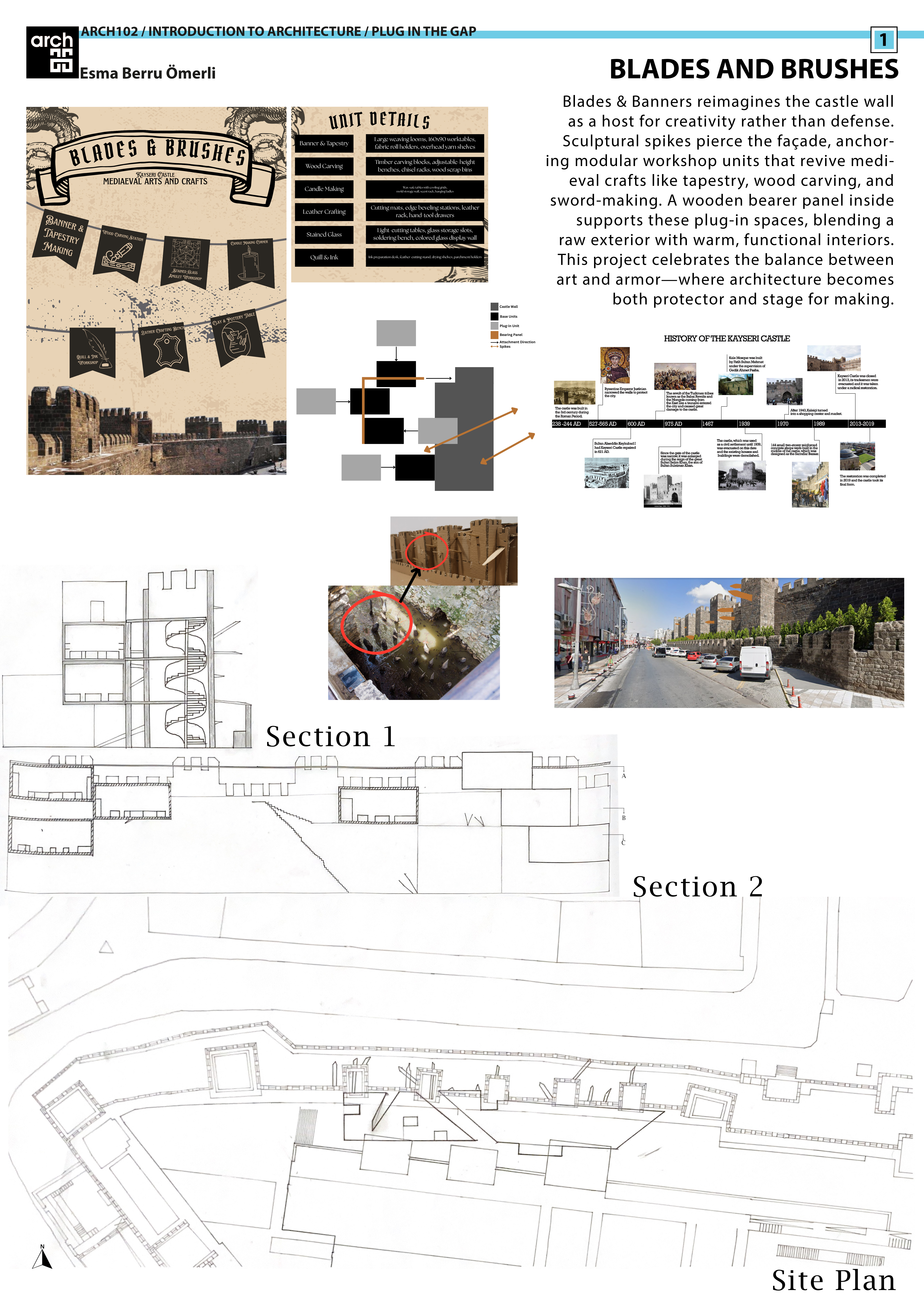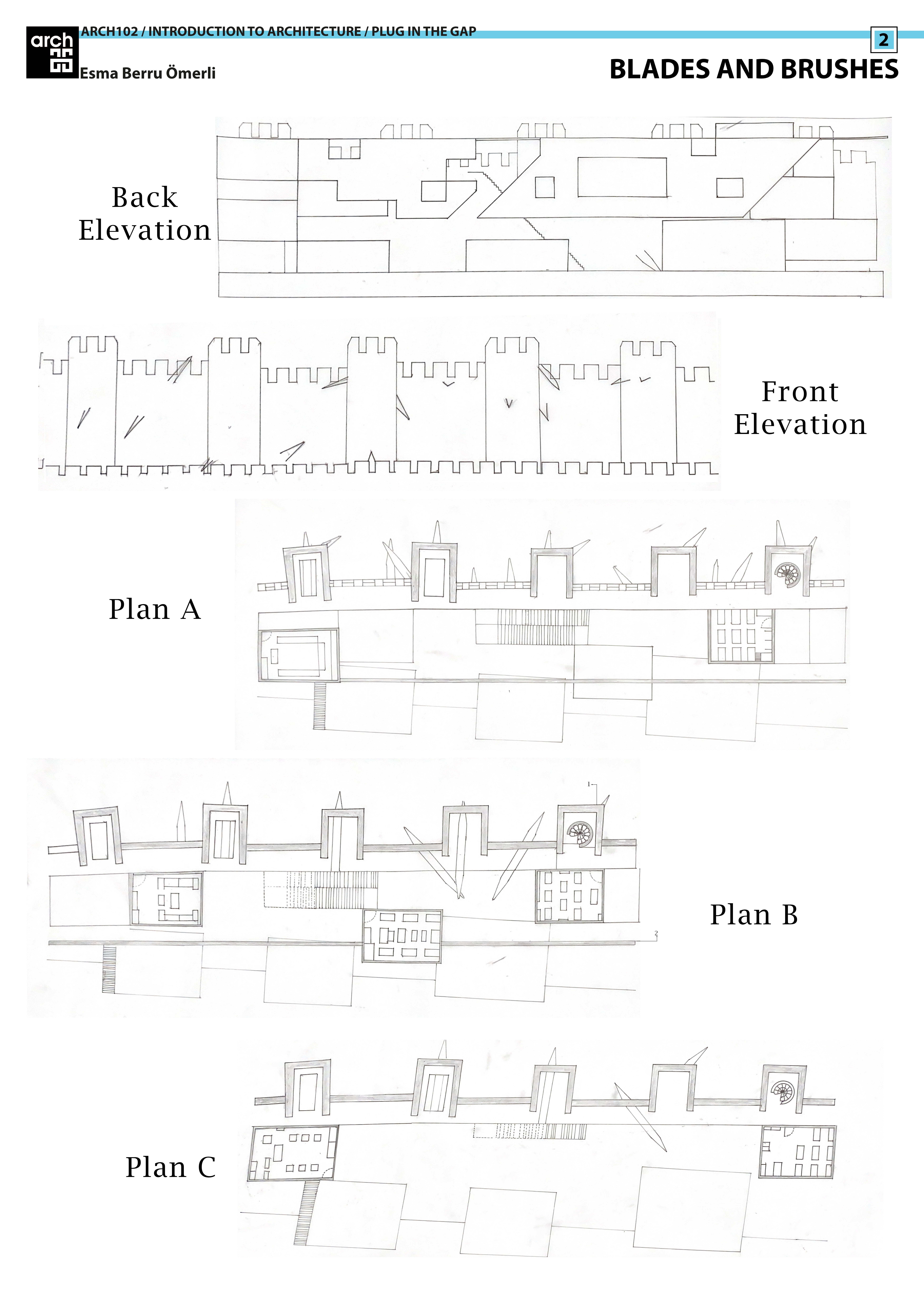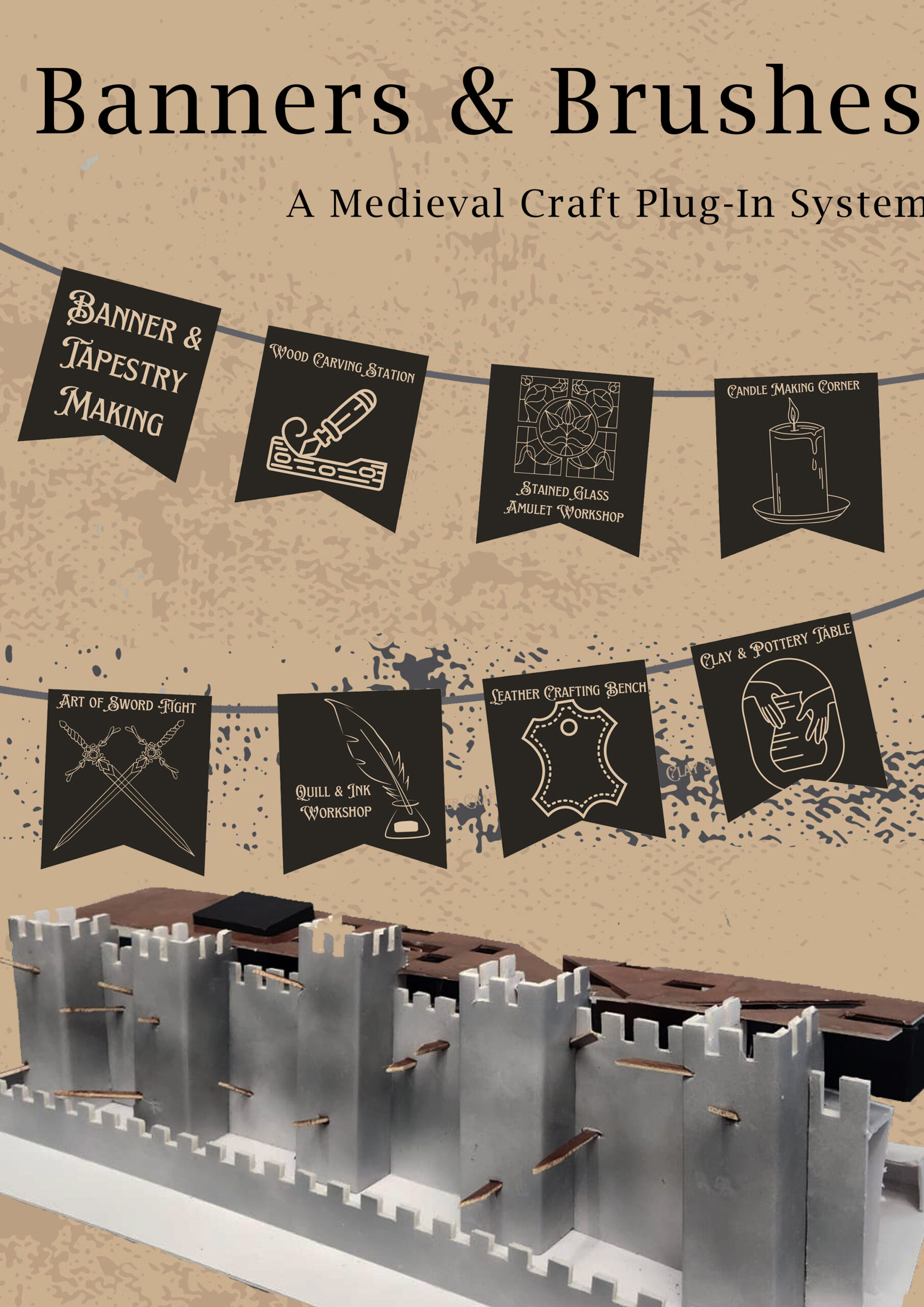BLADES AND BRUSHES / Esma Berru Ömerli
Blades and Brushes is a spatial exploration of medieval craftsmanship, designed as a modular plug-in structure that interacts with the outer shell of a castle. The project is attached in a duality: the harsh, spiked exterior sculpturally evokes medieval defense mechanisms, while the interior offers an immersive, craft-focused experience that celebrates historical handwork. Through this tension between inside and outside, the project aims to evoke both protection and production, defense and design.
The outer façade is defined by sculptural spikes, which not only serve as symbolic references to medieval armor and fortifications but also emphasize the building’s dramatic presence. While these elements are non-functional in a literal sense, they are conceptually significant, acting as visual anchors that reflect the era’s rough aesthetic and its layered symbolism. Behind these elements lies a neutral timber panel system to which each craft unit is pinned. These units are suspended from the bastions, creating a layered wall condition where mass and lightness coexist.
Inside, the layout is organized as a linear journey through eight workshop units: Banner & Tapestry Making, Stained Glass Amulets, Wood Carving, Candle Making, Pottery, Leather Crafting, Quill & Ink, and the Art of Sword Fighting. Each unit was designed based on its functional requirements and material needs. For instance, the candle-making corner incorporates ventilation needs and wax storage; the stained-glass area prioritizes natural light and safe glass-cutting surfaces; and the sword-fighting zone is planned as a performance and movement area. All units are dimensioned based on ergonomic standards and furnished with custom-designed tables, tool stations, and storage systems to support the corresponding activities.
The interior units maintain visual and formal ties to the exterior through repeated material language, angular geometries, and vertical rhythms that reflect the spikes. This ensures a stronger dialogue between the outer sculptural gesture and the inner working atmosphere, addressing earlier critiques and reinforcing the conceptual consistency.
Ultimately, Blades and Brushes is not just an architectural intervention—it’s a storytelling device. It creates a space where craft is elevated to ritual, and where the memory of the medieval world is translated into a modern, tactile experience. Visitors are not just observers but participants in a narrative space built from heritage, material, and motion. 


